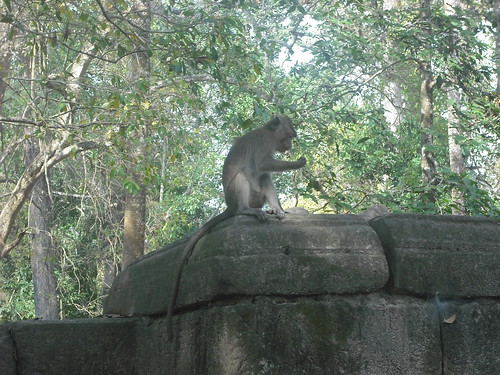The Hundred Monkey Theory & Collective Change
 Critical Mass
Critical Mass
The Hundred Monkey Theory provides hope for collective change in humanity. The notion that a critical mass of consciousness can change the collective consciousness is not a new one. The Hundred Monkey Theory emerged in the nineteen seventies when researchers in the wilds of Japan noticed that a few monkeys in the group they were observing began to wash their potatoes before eating them. Soon other monkeys in the group joined in this new behavior until approximately one hundred monkeys were washing their potatoes before they ate them. When the number of monkeys washing their potatoes in Japan reached one hundred, researchers in other remote regions of the world reported that the groups of monkeys they were observing also had begun to wash their potatoes before eating them. This was the birth of The Hundred Monkey Theory.
Sudden Evolutionary Shift
Almost overnight, the behavior of an entire species, stretched over several continents, changed. This phenomenon of a sudden evolutionary shift in species behavior became known as The Hundredth Monkey theory.
The Hundredth Monkey theory contained two noteworthy ideas. One was the concept of critical mass. The other was the idea of morphogenesis. A British theoretical biologist, Rupert Sheldrake, theorized that the one hundred monkeys in the Hundred Monkey Theory represented the critical mass necessary to transform the invisible field that regulated the behavior of the entire species. Once the invisible regulating field shifted, monkeys all over the world reacted to that change by altering their eating habits. Sheldrake called his theory of an invisible regulating field morphogenesis.
The Hundredth Monkey theory with its ideas of critical mass and morphogenesis may provide an important clue to our future. If we are to make ourselves whole and fulfill our destiny, we must find our inner person and from that center of dynamic and magnetic force call down the inner light that will transform our lives. If enough of us engage in this endeavor, together we will create the critical mass needed to change the world. We will know we have reached critical mass when a shared center emerges, a common consensus is reached, and things in the world begin to change for the better. The morphogenic field that may in theory regulate human behavior might then encourage a new trend among the masses to seek personal growth and evolution. In this sense, The Hundred Monkey Theory provides both hope and the potential for mass evolution.
The Juxtaposition of Opposites
In times of conflict, darkness, and moral decay, seeking the light is a natural reflex. Salvation has a higher priority when life is less certain and the future less secure. God becomes more important when the negative forces at play in the world threaten to overrun us. As the darkness threatening us becomes greater, the urge to find comfort in God grows stronger. The ideas inherent in the Hundred Monkey theory may well hold the blueprint for humanities future.
We are not helpless. Everyone has a role to play in the great drama of life. We are here to grow and elevate our consciousness. We help the world get better when we get better. Each of us carries a piece of the world on our shoulders, and the fate of the world is our collective responsibility. We cannot fulfill our unique role in that responsibility until we find our real self and activate our higher purpose. Dr Henry Makow PhD put the same idea in these words when he wrote, “The world will not be saved by God, but by acts of men representing God.”
